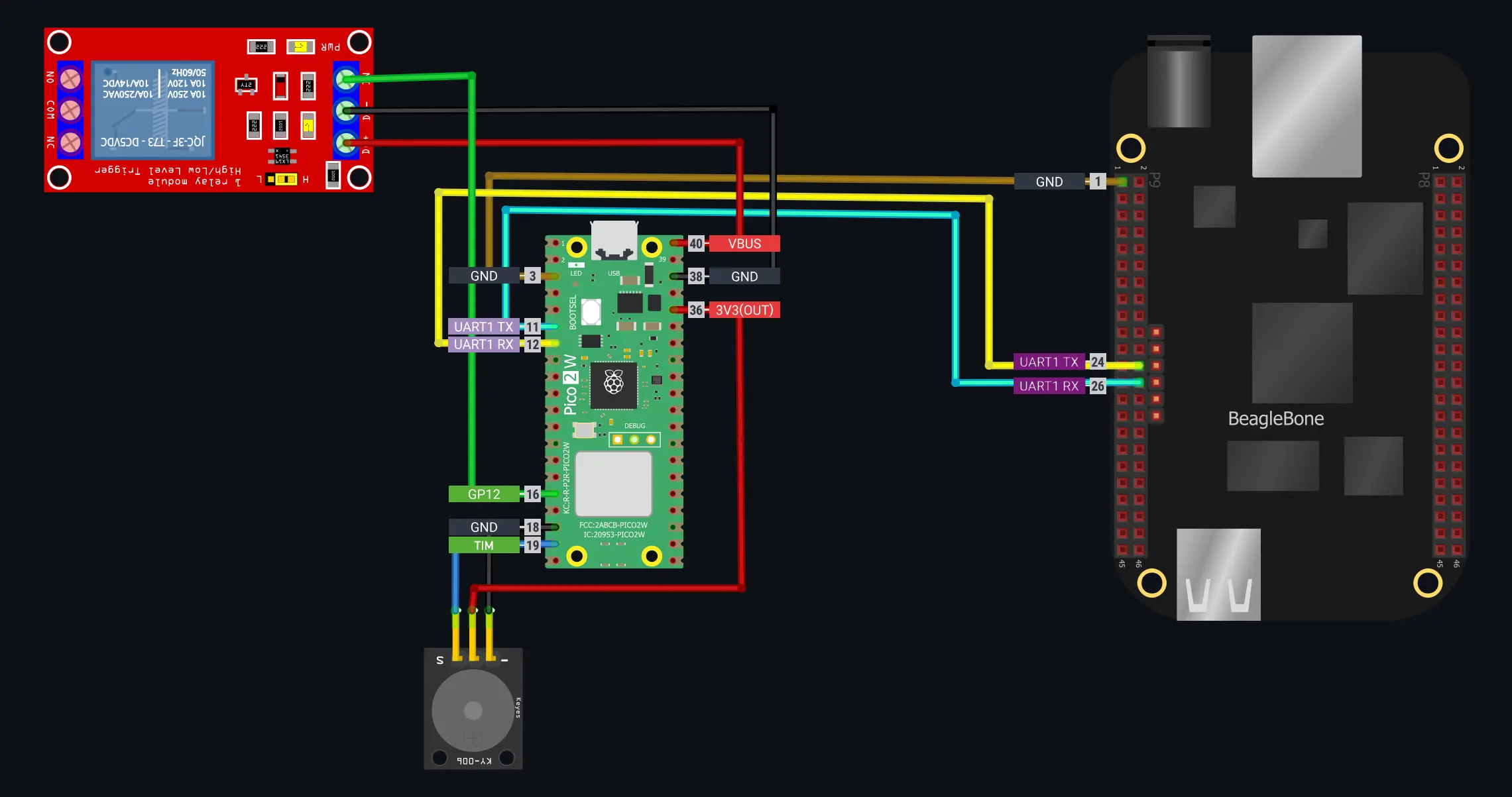PetWatch is a distributed embedded system designed to protect designated areas from pet/wild animal intrusions using computer vision and automated deterrents. The system uses a three-tier architecture: BeagleBone Black for motion detection and camera capture, Raspberry Pi Pico 2W for network forwarding and deterrent control, and a detection server running YOLOv5 for accurate pet identification with a larger model.
When motion is detected, the BeagleBone captures a frame and transmits it via UART protocol to the Pico 2W. The Pico forwards the image to the detection server over WiFi, which uses YOLOv5 to identify if the motion was caused by a pet (cat, dog, or other animals). Upon positive detection, the system triggers a water pump and buzzer alarm to deter the pet, while sending an email notification with an annotated image showing the detection.
Project Goal: Create a reliable, automated system that can distinguish between pets and humans, triggering deterrents only when pets enter restricted areas. The system needed to be modular, resilient to network failures, and capable of real-time processing with minimal false positives.







